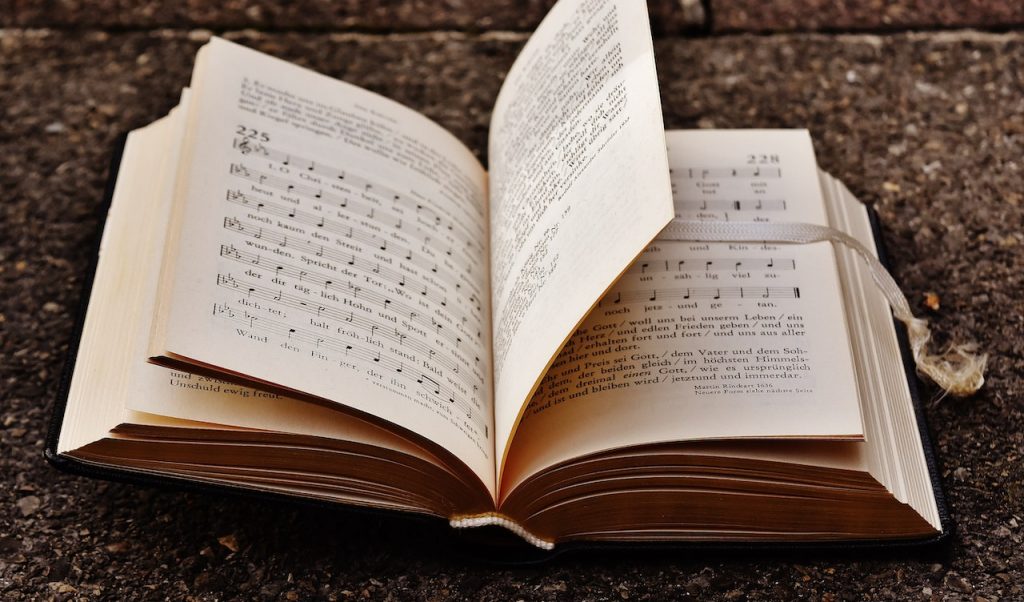Music, in its essence, is a language. Just like words form sentences and paragraphs, musical notes come together to create structures and patterns. One such foundational pattern is the binary form. At its core, binary form is a simple yet profound structure, comprising two contrasting sections that dance together in harmony. But why should someone, especially our target audience, care about these musical forms?
Now that we’ve caught your attention, hang on! We are about to check out the intriguing world of binary form. From its early origins to its contemporary influence, binary form has underlying significance for much of modern music. No matter if you are an advanced musician or just beginning your steps in music, you will gain some new insight into this fascinating musical form.

Historical context of binary form
Ever wondered about the roots of the music you’re tapping your feet to? Let’s dive deep into the world of binary form, a concept that’s been around for ages, shaping the melodies we love.
Origins of binary form
Binary form is like the heartbeat of many classical compositions. Binary form dates back to the Baroque period of Western classical music eras. It is a basic music structure that is built from two contrasting sections: an A section and a B section. You can think of these two sections like dancing opposites; each section has its own, unique essence, yet they come together to create beautiful music.
Did you know? The early dance movements in suites often used binary form. So, the next time you’re swaying to a classical tune, remember, it might just be a dance from centuries ago!
Evolution of binary form
As music evolved, so did binary form. While its roots are in classical compositions, it didn’t stay confined there. By the Classical period, binary form started to morph, giving birth to the Ternary Form (ABA). But that’s a story for another day.
In contemporary music, binary form is like that secret ingredient that spices things up. From pop to rock, traces of binary form can be found if you listen closely. It’s all about repetition and contrast, creating a balance that’s pleasing to the ears.
Binary form’s influence on music
Binary form has been a game-changer, especially in the realm of classical music. Composers like Bach and Handel often employed this form, crafting masterpieces that have stood the test of time. But even modern artists have been influenced by this time-tested structure. You may have noticed that many of your favorite classical piano music have two distinct sections – that’s a development of binary form in action!
Learning to understand musical forms and concepts such as binary form can help you widen your knowledge of music and open the door to comprehending and connection patterns that occur all the time in music. If you are inspired to learn more about music and master the piano, Skoove’s platform features both self-learning tools and 1-1 learning sessions.
Understanding the basics of binary form
Music is like any other language; it has its own sets of grammar and constructions. While it is not explicitly necessary to learn everything there is to know about music theory (just as you don’t need to completely understand the minutiae of grammar), the fact remains that structures exist and you can enhance your understanding by learning them. Fortunately, they are readily accessible for pretty much everyone! Let’s break it down.
Definition of binary form
Binary form is really quite simple. Like any binary system, there are two contrasting sections, generally labeled as an A section (or ‘A’) and a B section (or ‘B’). In a binary form, these two sections are played in chronological order, with the A section first, followed by the B section. The sections can then be developed or modified as the composer sees fit.
Characteristics of binary form
Now, let’s get into the nitty-gritty. The two sections, ‘A’ and ‘B’, are distinct yet complementary. The ‘A’ section introduces a musical idea, while the ‘B’ section offers a contrasting theme. It’s all about balance. The beauty of binary form lies in its repetition and contrast. While the ‘A’ section might be melodious and soft, the ‘B’ section could be rhythmic and bold, creating a delightful musical dance of push and pull.
Examples of binary form in popular music
You might be thinking, “Is binary form still relevant in today’s music?” Absolutely! Many popular songs, even the ones you jam to on your morning commute, employ binary form.
For instance, think of a song where the verse and chorus have distinct melodies but come together seamlessly. That’s binary form working its magic. The structure not only gives songs a catchy rhythm but also makes them memorable, contributing significantly to their overall appeal.
Examples of popular songs or classical compositions with binary forms that you can learn with Skoove include:
- “Imagine” – John Lennon
- “Piano Man” – Billy Joel
- “Autumn Leaves” – Jazz Standard
- “La Bamba” – Ritchie Valens
- “Swan Lake” – Pyotr Ilyich Tchaikovsky
Deep dive: analyzing binary form
Music, much like a captivating novel, has layers waiting to be unraveled. As we delve deeper into binary form, we’ll uncover its nuances and see how it’s been the backbone of many iconic pieces. Ready to embark on this musical journey?
Case studies
Binary form isn’t just a theoretical concept; it’s been the soul of many compositions, both classical and contemporary. Let’s take, for instance, a classical piece by Bach. The distinct ‘A’ and ‘B’ sections can be clearly identified, each bringing its own mood and tempo. Now, juxtapose that with a modern pop song. The form remains, but the implementation might be more subtle, with electronic beats and synths. The beauty of binary form is its adaptability, allowing composers to mold it as per their vision, thereby impacting the overall vibe of the piece.
Identifying binary form in music
For those eager beavers ready to spot binary form in their favorite tunes, here’s a step-by-step guide:
- Listen actively: Start by immersing yourself in the music. No distractions!
- Identify the ‘A’ section: This is usually the first theme you’ll hear. It sets the tone.
- Wait for the shift: The ‘B’ section will bring a contrasting melody or rhythm. It’s the twist in our musical tale.
- Repetition is key: Often, the ‘A’ section might repeat, giving you a clearer indication of the form.
- Practice with varied genres: From classical to rock, try identifying binary form across genres.
For beginners, honing your listening skills is crucial. Start with simpler pieces before diving into complex compositions. And remember, practice makes perfect. If you’re keen on playing and understanding music better, Skoove provides a comprehensive learning experience by offering self-paced online piano lessons. Dive in and explore!
Benefits of understanding binary form for the modern listener
Music serves many purposes for many different people, from relaxation to artistic expression and beyond. One reason music is so great is because you don’t have to understand any of the music theory behind it to have a great experience. However, learning about music theory can enhance your understanding and appreciation of music in multiple ways!
Let’s explore how grasping binary form can be a game-changer for the modern listener.
Enhancing musical appreciation
At the heart of every music lover lies a deep-seated curiosity. By understanding binary form, you’re not just listening to a tune; you’re experiencing a story. Recognizing the ‘A’ and ‘B’ sections, the ebb and flow of melodies, can make every listen a new adventure. For our sensual and creative audience, this knowledge adds depth to their listening, making every note resonate with their curious souls. It’s like savoring a fine wine, where understanding its origins and nuances amplifies the pleasure.
Exploring new musical horizons
Music is a vast ocean, with treasures spanning genres and eras. For our audience, who crave new experiences and the thrill of discovery, understanding binary form can be their compass. It encourages them to venture beyond their usual playlists, to dive into classical symphonies or groove to retro beats. Every genre, every era has its gems, and binary form is that common thread weaving through them. So, the next time you feel the need to switch off from the mundane and experience something fresh, let music be your gateway.
Binary form in contemporary music
While binary form has its roots deeply embedded in classical compositions, its influence in today’s music landscape is undeniable. As we journey through the world of contemporary music, let’s uncover how this age-old structure has been reimagined and revitalized by modern artists.
Influence of binary form in modern genres
Binary form isn’t just confined to the grand halls of classical concerts; it’s alive and kicking in the bustling clubs and on the radio waves. Genres like pop, rock, and jazz have all embraced and adapted binary form in their unique ways. Pop songs, with their catchy hooks, often employ a clear ‘A’ and ‘B’ structure, making them instant hits. Rock bands, with their electrifying guitar solos, might introduce a contrasting ‘B’ section that stands out. Jazz, with its improvisational nature, uses binary form as a foundation, allowing artists to experiment and innovate.
Speaking of artists, many contemporary icons, from Taylor Swift to Coldplay, have songs that showcase binary form’s influence. It’s a testament to the form’s versatility and enduring appeal.
The future of binary form
Music, like any art form, is ever-evolving. As we stand at the crossroads of numerous emerging music trends, one can’t help but wonder: What’s next for binary form? With genres like electronic, ambient, and experimental music gaining traction, binary form might see a fusion with digital elements, creating a blend of the old and new. Perhaps we’ll see more fluid transitions between the ‘A’ and ‘B’ sections, or maybe a resurgence of its purest form in a modern avatar. Whatever the future holds, binary form’s legacy is here to stay, continuing to shape the melodies of tomorrow.
Final notes on binary form’s legacy
Binary form, with its rich history and modern relevance, showcases the depth and diversity of music. This structure, simple yet profound, has shaped countless melodies, resonating with listeners across eras.
For our ever-curious audience, understanding such musical intricacies elevates their listening experience, revealing the stories behind the notes. As we conclude our exploration, we encourage you to keep diving deeper into the vast ocean of music. With every new discovery, you’ll find a richer connection to the melodies. And remember, as you embark on this journey, Skoove is right by your side, ready to guide and inspire.
Author of this blog post:

Eddie Bond is a multi-instrumentalist performer, composer, and music instructor currently based in Seattle, Washington USA. He has performed extensively in the US, Canada, Argentina, and China, released over 40 albums, and has over a decade experience working with music students of all ages and ability levels.















